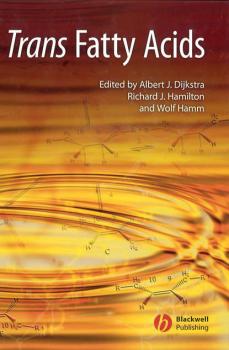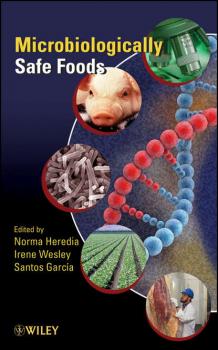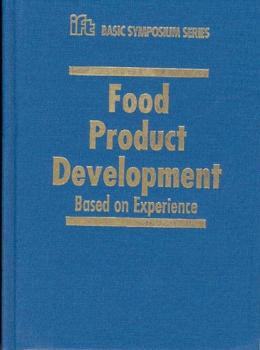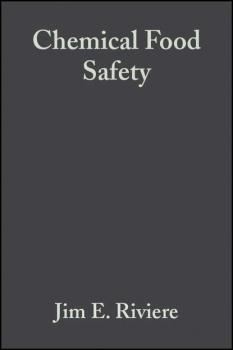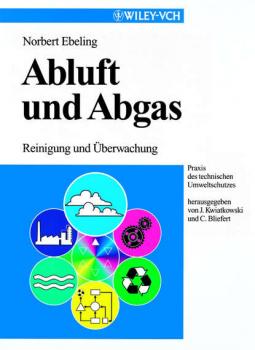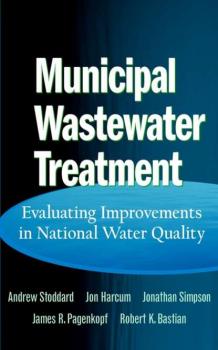ТОП просматриваемых книг сайта:
ЛИТМИР - LITMIR.BIZ - Электронная библиотека
Скачивание или чтение онлайн электронных книг.Аннотация
Plant secondary metabolites have been a fertile area of chemical investigation for many years, driving the development of both analytical chemistry and of new synthetic reactions and methodologies. The subject is multi-disciplinary with chemists, biochemists and plant scientists all contributing to our current understanding. In recent years there has been an upsurge in interest from other disciplines, related to the realisation that secondary metabolites are dietary components that may have a considerable impact on human health, and to the development of gene technology that permits modulation of the contents of desirable and undesirable components. Plant Secondary Metabolites: Occurrence, Structure and Role in the Human Diet addresses this wider interest by covering the main groups of natural products from a chemical and biosynthetic perspective with illustrations of how genetic engineering can be applied to manipulate levels of secondary metabolites of economic value as well as those of potential importance in diet and health. These descriptive chapters are augmented by chapters showing where these products are found in the diet, how they are metabolised and reviewing the evidence for their beneficial bioactivity.
Аннотация
Trans fatty acids (TFAs) have been used for many years to impart desirable physical characteristics to fats and fat blends used in food manufacturing. However, clinical trials and epidemiological studies conducted over the last thirty years have shown that TFAs can increase “bad” cholesterol levels in the blood while reducing “good” cholesterol. Accordingly, they are also linked with increased risks of coronary heart disease, thrombosis and strokes. For this reason, the food industry has been obliged to find alternatives to TFAs, thus enabling it to meet the presumed consumer demand for “low” or “no” trans fats products. The issue is becoming more and more pressing. For example, US labelling regulations now require that food manufacturers state the trans fat content of their products on the packaging. This book provides an overview of trans fatty acids in oils and fats used in food manufacture. Topics covered include: the chemistry and occurrence of TFAs; analytical methods for determining the fatty acid composition including TFAs of foods; processing techniques for reducing, minimising or even avoiding the formation of TFAs; TFA alternatives in food; health and nutrition concerns and legislative aspects. It is directed at chemists and technologists working in edible oils and fats processing and product development; food scientists and technologists; analytical chemists and nutritionists working in the food industry.
Аннотация
This book focuses on state of the art technologies to produce microbiologically safe foods for our global dinner table. Each chapter summarizes the most recent scientific advances, particularly with respect to food processing, pre- and post-harvest food safety, quality control, and regulatory information. The book begins with a general discussion of microbial hazards and their public health ramifications. It then moves on to survey the production processes of different food types, including dairy, eggs, beef, poultry, and fruits and vegetables, pinpointing potential sources of human foodborne diseases. The authors address the growing market in processed foods as well novel interventions such as innovative food packaging and technologies to reduce spoilage organisms and prolong shelf life. Each chapter also describes the ormal flora of raw product, spoilage issues, pathogens of concern, sources of contamination, factors that influence survival and growth of pathogens and spoilage organisms, indicator microorganisms, approaches to maintaining product quailty and reducing harmful microbial populations, microbial standards for end-product testing, conventional microbiological and molecular methods, and regulatory issues. Other important topics include the safety of genetically modified organisms (GMOs), predictive microbiology, emerging foodborne pathogens, good agricultural and manufacturing processes, avian influenza, and bioterrorism.
Аннотация
Verocytotxin producing Escherichia coli (VTEC), and in particular, strains of serogroup o157, have emerged as significant pathogens causing a range of severe and potentially fatal illnesses. The European Union has recognised the threat posed by E. coli O157:H7 and the need to devise control strategies based on an understanding of VTEC pathogenicity, transmission, survival and growth. It also acknowledges the imortance of informing farmers, veterinarians, food producers and health authorities so that each of these groups can act appropriately to reduce the overall hazards posed by these organisms. To contribute to the development and dissemination of effect control strategies, the European Commission funded a Concerted Action Project «A European study on animal, food, and biomedical aspects of verocytotoxigenic E. coli including serotype O157:H7, an emerging pathogen» (CT98-3935) within the Agriculture and Agro-industry Framework IV Research Programme (1998-2001). This book, compiled under the auspices of the above project, integrates contributions from project participants and invited contributor, to provide a comprehensive overview of the current state of research on VTEC. It will be invaluable to current workers in this area, and those seeking an effective introduction to research on this important pathogen
Аннотация
Dictionary of Flavors provides information on flavors, flavor chemistry and natural products, as well as a perspective on the related fields of regulatory, sensory, chemistry, biology, pharmacology, business, bacteriology, marketing and psychology. Flavors covered include those used in food and beverages, tobacco flavorings, alcoholic beverages, and pet and animal foods. Comparative flavor chemistry is used to evaluate and describe homologous groups of similar chemical structures. Author and flavor chemist De Rovira has collated the G.R.A.S. ingredients into chemically similar groups, where those structural relationships would dictate flavor attribute similarities, allowing predictable aroma types that can be more easily recalled and developed. Coverage in the second edition is extended to include the many significant and recent changes in the fields of flavor chemistry, food technology, and regulatory. Definitions of many items are expanded and inclusion of new items is extensive. To view figures from the book in full color please visit www.flavordynamics.com.
Аннотация
Improve your product development success ratio! This IFT Basic Symposium is the collective work of a team of seasoned food industry consultants whose experiences and observations provide a «how to» guide of successful product and process development. Their information-packed presentations will deepen and broaden the food technologist's knowledge of food product development to the sphere beyond the laboratory. Authors address the following key components of product development: Managing the Product Development Process, Consumer & Market Research, Making It Happen, Cost & Pricing A case study and several short case history lessons illuminate product development from perspectives that include consumer and marketing needs, manufacturing ramifications, communication issues, food safety systems, shelf life techniques, and distribution elements.
Аннотация
Chemical Food Safety: A Scientist's Perspective introduces readers to the science of risk assessment as applied to food safety and offers relevant, current information on research and statistics, chemicals, biotechnology issues, and emerging diseases that challenge the risk assessment strategies of toxicology and microbiology. Riviere investigates the potential health consequences of pesticides, food additives and drugs, demonstrating how science can be applied to make risk assessments. He differentiates between “real risks” and “phantom risks,” unearthing numerous fallacies in the public perception of risk assessment and evidence of people’s intolerance to certain types of risks—no matter how remote. Chemical Food Safety is based on credible, scientifically correct data rather than irrational fears propagated by media coverage concerning food safety. The book explores these riveting topics: *food security and the world of bioterrorism, *toxicity of natural compounds and artificial additives in foods, *the toxicology of pesticides in food, *issues of biotechnology and genetically modified food, *other compelling issues in chemical food safety.With its focus on how the results of toxicology are applied in the real world, Chemical Food Safety: A Scientist’s Perspective will be a valuable addition to the libraries of food scientists, dieticians, animal producers, veterinarians and anyone else with a professional or personal interest in risk assessment, toxicology, epidemiology or food safety.
Аннотация
A thorough analysis of public policy and the Clean Water Act's effect on water quality in the U.S. Using water quality data and historical records from the past 60 years, this book presents the measured impact of the 1972 Clean Water Act on domestic waterways-ecologically, politically, and economically. Municipal Wastewater Treatment supports the hypothesis that the Act's regulation of wastewater treatment processes at publicly owned treatment works (POTW) and industrial facilities has achieved significant success. The authors' case is presented in: * Background information on the history of water pollution control and water quality management * Chapters addressing long-term trends in biochemical oxygen demand loadings from municipal wastewater plants and the «worst-case» dissolved oxygen levels in waterways downstream of point sources before and after the Clean Water Act * Nine case study assessments of long-term trends of pollutant loading water quality and environmental resources associated with POTW discharges Using long-term trends in dissolved oxygen as the key indicator of water quality improvements, this book provides a detailed retrospective analysis of the effectiveness of the water pollution control policies and regulations of the 1972 Clean Water Act. The successes of the Act that have been achieved over the past 30 years are placed in the historical context of the «Great Sanitary Awakening» of the 19th century and changes in public policies for water supply and water pollution control that have evolved during the 20th century to protect public health and the intrinsic value of aquatic resources. Case study sites include the Connecticut River, Hudson-Raritan Estuary, Delaware Estuary, Potomac Estuary, Upper Chattahoochee River, Ohio River, Upper Mississippi River, and Willamette River. Complete with end-of-chapter summaries and conclusions, Municipal Wastewater Treatment: Evaluating Improvements in National Water Quality is an essential book for engineers, scientists, regulators, and consultants involved in water quality management and wastewater treatment, as well as students of environmental engineering, environmental science, and public policy.
Аннотация
A comprehensive practical guide to environmental forensics With real-world examples and advice on both scientific and legal issues, Practical Environmental Forensics stands on the front line of this new interdisciplinary approach to the environmental litigation process. Compiled by experts with decades of combined experience in teaching, research, consulting, and litigation, it is the first book to offer a comprehensive presentation of environmental forensics.The first section provides an introduction to the forensic process, a historical perspective on pollution, and related laws and insurance issues. The book continues with a review of the most commonly used technical approaches and methods employed to support forensic litigation case issues. A third section introduces essential environmental forensic support functions, including admissibility of evidence, expert case management, and the use of mediation methods in settling cases. Finally, the book explores the environmental forensic process through an extensive body of real case studies in which the authors have participated. This comprehensive guidebook includes: Guidance in the development and presentation of forensic opinions within the litigation process Stand-alone applications of historical research, groundwater contaminant modeling, chemical fingerprinting, toxicology, and risk assessment to environmental litigation Chemical and investigative forensic methods presented within the context of environmental forensic case histories Illustrative problem-solving as an invaluable teaching and learning resource Typical forensic cases grouped to illustrate the three main areas of environmental litigation: minimizing damages to clients, allocating damages between responsible parties, and resolution of insurance-related issues For engineers, scientists, attorneys, government regulators, financial and real estate professionals, and the broad spectrum of environmental consultants, this book is critical for all whose work involves environmental contamination.


